Foraging in March 2022
Posted on 31st March 2022
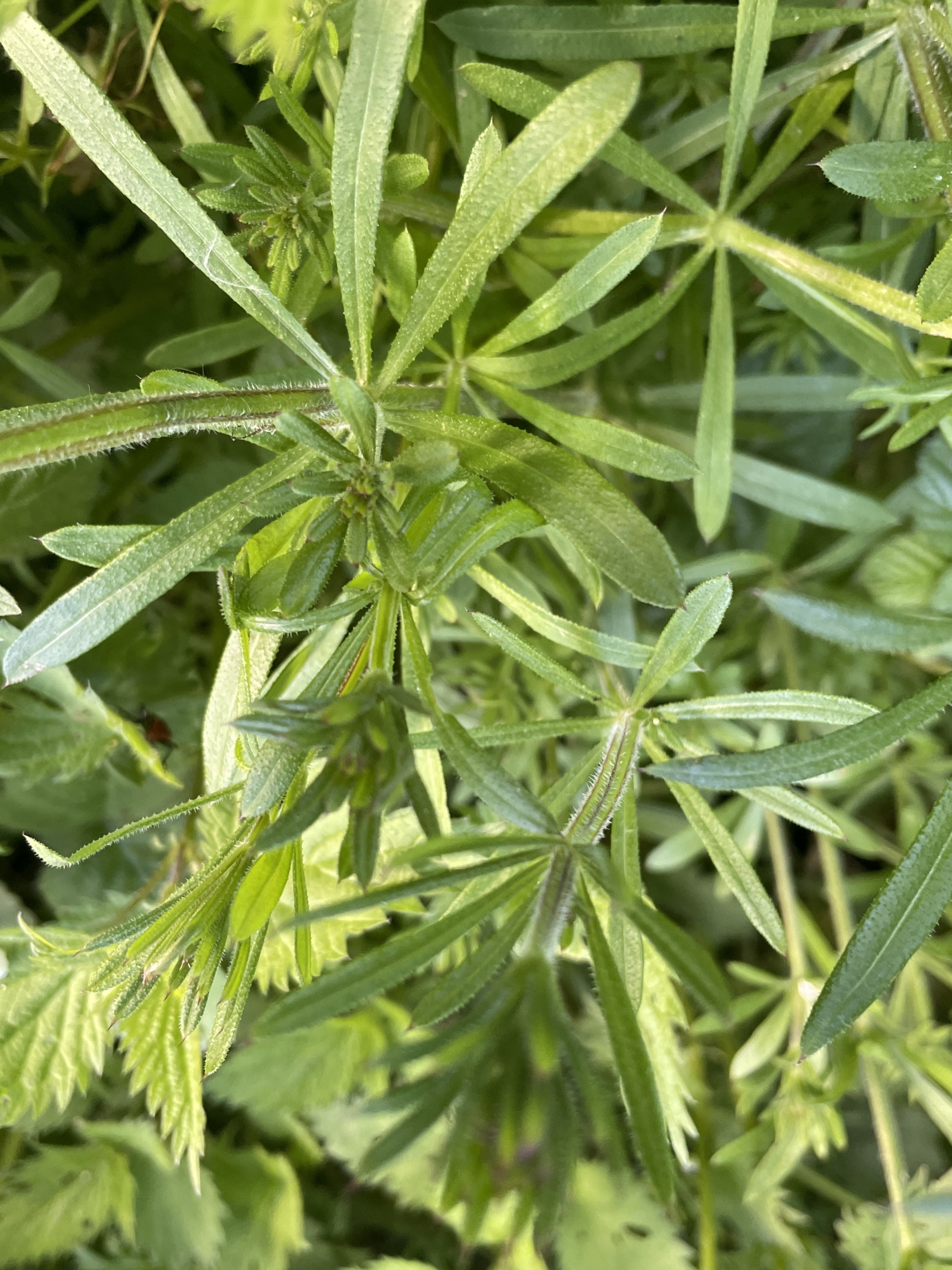
M A R C H
Foraging in March: Here are a few of the edibles that we’ve spotted
March has brought us some delicious things to forage for this month. We are seeing a very sunny Spring here in the midlands and have been spending a lot of time outside exploring.
We’ve noticed many different plants and mushrooms popping up around us. Wild Garlic, Common Hogweed shoots and Scarlet Elf Cups are among some of the foraging favourites being spotted right now.
Here’s a few things that have made their way onto our plates in March. What have you been spotting at the moment? Let us know in the comments below.
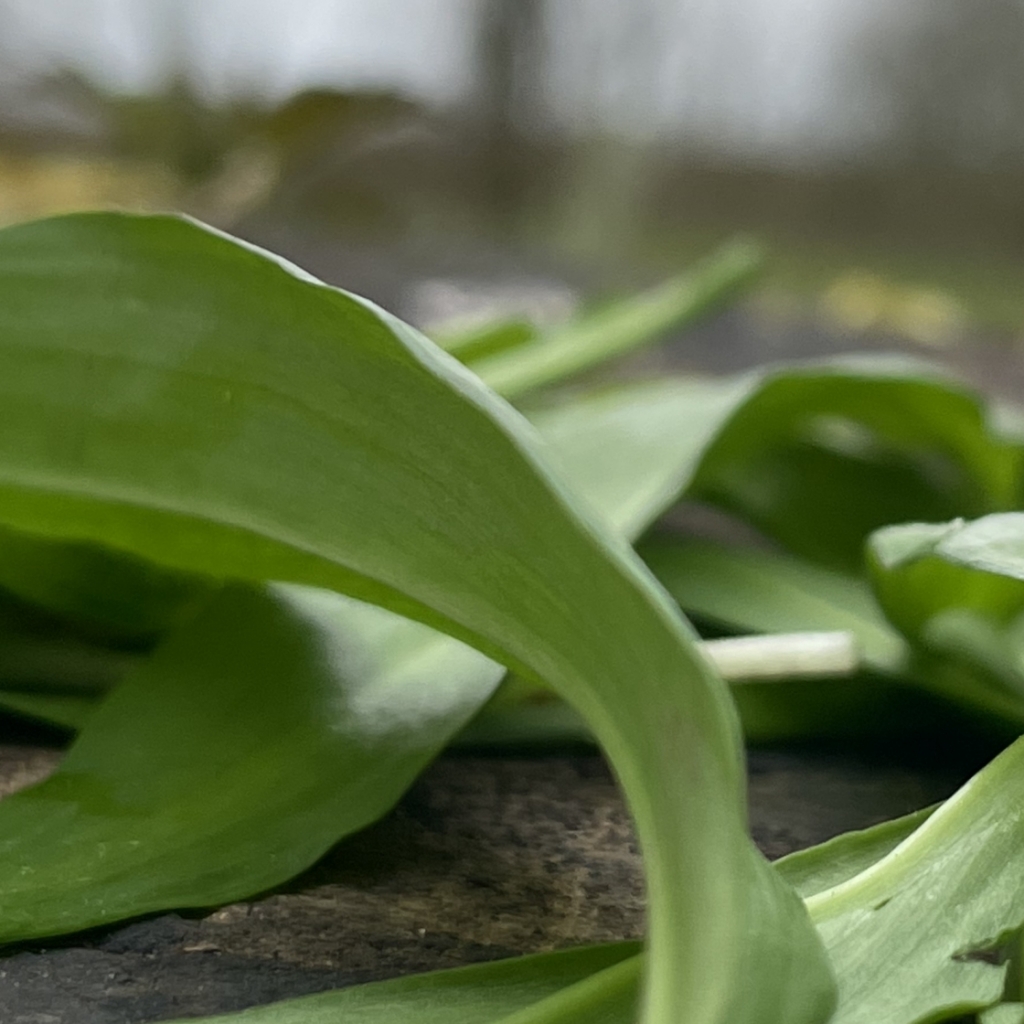
Scientific name: Allium ursinum
Likely to be foraged for through spring and summer. You may notice the shoots popping up through February and then carpeting woodland floors from march and April. The whole plant can be used in its raw state or cooked. We think Wild Garlic works well in a creamy garlic spaghetti sauce.
Your nose is your strongest tool when it comes to ID-ing this little plant. The smell of garlic is unmistakable on the leaves and will help you determine whether or not you’ve got the correct plants…
This plant is often referred to by its common names as; Ramsons, Bears garlic, Broad-leaved garlic & Wood garlic. Available through spring and summer As a food it has multiple uses as the months go by; from sweet garlicky leaves, then spicy flower buds followed by miniature ‘garlic bombs’ when the plant goes to seed. wild garlic is one of our favourite plants to find, its incredibly tasty and is a number one on a foragers spring spot list.
Scientific name: Morchella spp
A very sought after and popular foraging favourite. We haven’t spotted one on our walks yet this year however they are in season now (fingers crossed!). Many foragers search for this mushroom each year and when found it’s one of the (in our opinion) most delicious mushrooms within the UK. Not particularly common but a true treasure when found. You are most likely to spot these mushrooms hiding in woodlands from March through to June in poorer, alkaline soils such as chalk and lime stone. This mushroom MUST be cooked before consumption!
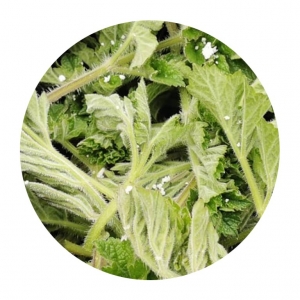
Scientific name: Heracleum sphondylium
One of our favourite spring finds however, please exercise caution while identifying this plant, with a possible confusion being Giant Hogweed (Serious Irritant)
*Please do not pick unless 100% sure you know you have the correct plant*
The edible parts on this plant are the young shoots and leaves and the unopened flower heads and seeds. These plants can be found in almost every field and hedgerow in the country.
Common Hogweed:
Don’t be scared when identifying, be informed.
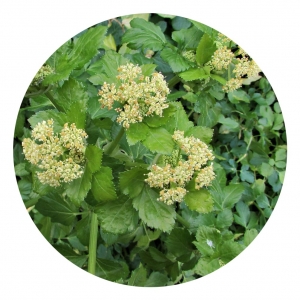
Scientific name: Smyrnium olusatrum
This plant is often referred to by its common name as Horse Parsley. Alexanders can be foraged from January through to September. These plants are commonly found in coastal areas growing in great swathes along roadsides, cliffs, sea walls and path edges but they’re also foraged for inland, occasionally in meadows.
Alexanders flavour is similar to that of celery. The leaves can be used in salads when young and fresh. The shoots can be collected through winter into the spring time. When they start to flower they may become tough and are good to use like broccoli.
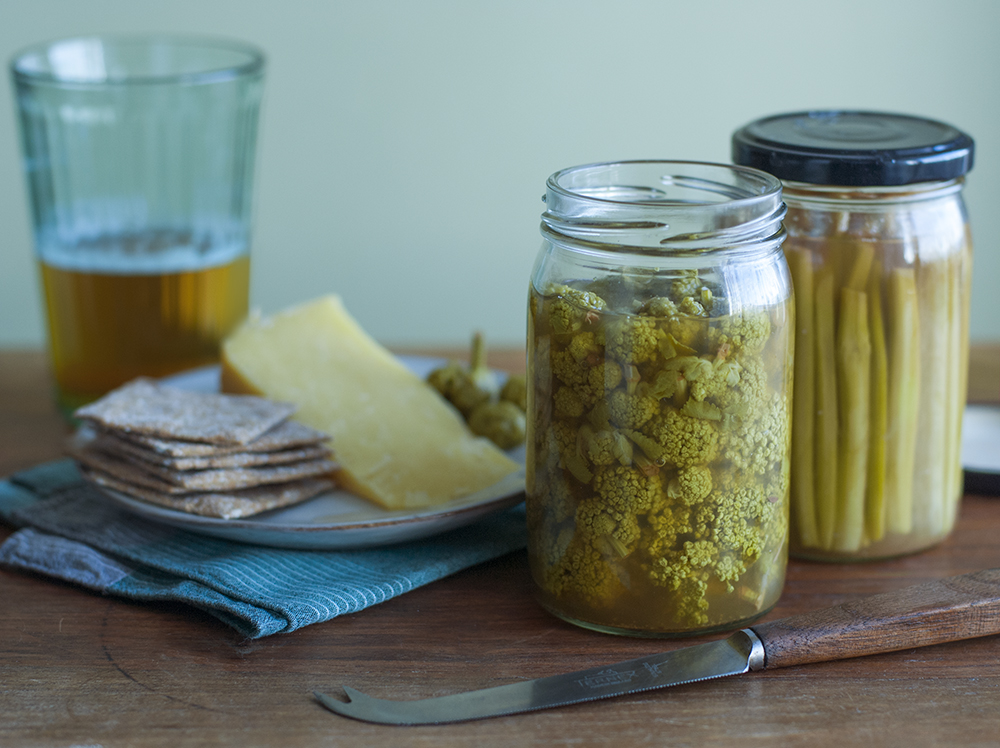
Why not try our pickled Alexanders recipe to help preserve your goodies.
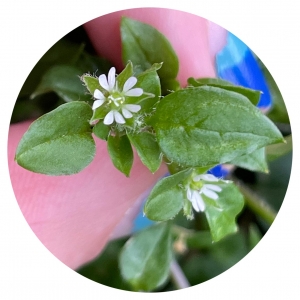
Scientific name: Stellaria media
A great find for a novice forager, a key identifier for common chickweed is the Mohican of hairs running down one side of the stem. A great little plant for a fresh salad (better than lettuce in our opinion!). When collecting, its best to pick the young fresh tops as it becomes stringy and fibrous the further down you pick.
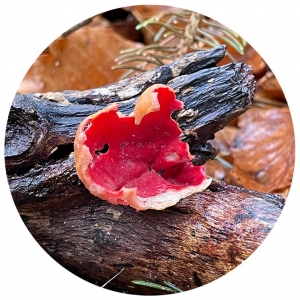
Scientific name: Sarcoscypha austriaca
Anyone following our social media @foragingshop will know that we’ve been spying these mushrooms all month. From just peeking through the leaf litter in January to seeing them in their prime in February- early March ready to pick. These most recent spots have been a little to old (or eaten) to collect.
A tasty little mushroom when fried in a pan with butter and quite commonly found growing on dead wood (hazel) and amongst leaf litter.
These mushrooms can be found from November through to April. Look out for their vivid red caps which are cup shaped, flattening out to a shallower disc.
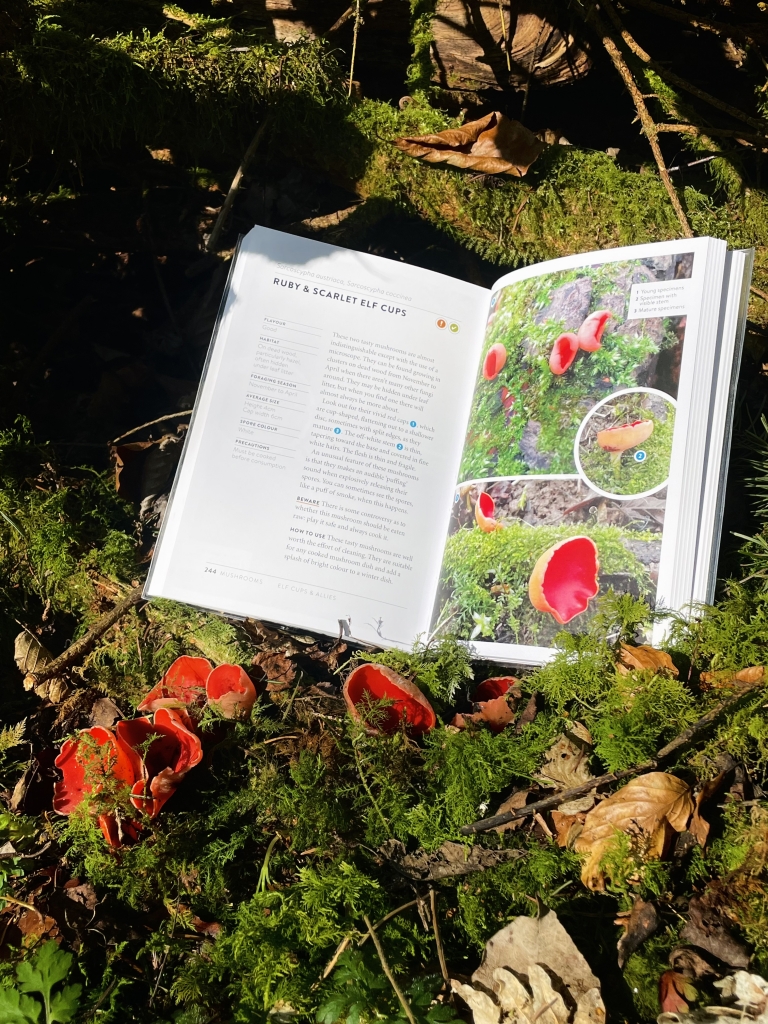
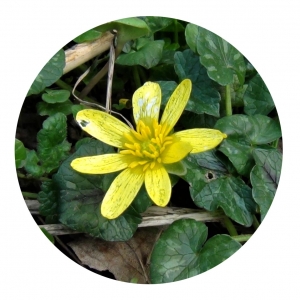
Scientific name: Ranunculus ficaria
Foraged from March through to June, these little yellow flowers brighten up any woodland floors or garden particularly thriving in damper soils and ditches. The heart shaped leaves form a carpet on grass and woodland floors in spring and can be picked and used in salads.
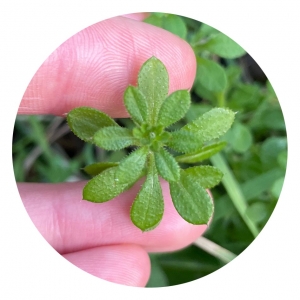
Scientific name: Galium aparine
This plant is often referred to by its common names as; Cleavers, Goosegrass, sticky willies.
This bristly plant is likely remembered from school years when pinning it our peers clothing.
Can be foraged for year-round, in hedges, along paths and roadsides and woodlands. These plants are best collected when very young
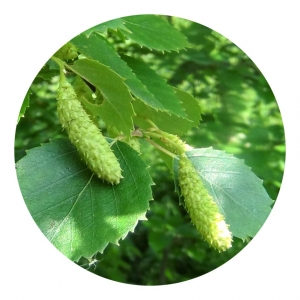
This beautiful tree is one that’s easy to ID with its white bark and delicate female catkins that appear in March. The leave on this tree are triangular in shape with serrated edges. Traditionally, during the first two weeks of March sap is collected by ‘tapping’ the trunk.
This contains betulenic acid that is becoming popular as a healthy beverage and tastes like sugared water.
Happy foraging everyone!
If you’d like to know a little more about our finds please head over to our sister site, Wild Food UK to see their very helpful mushroom and hedgerow guides
*please note that photos vary to every hedgerow*.
Please let us know if you need any assistance or information and remember to stay safe and never eat anything unless you’re 100% sure it is safe to do so.
Don’t forget to follow us on our social media pages
Let us know in the comments below what you’ve been spotting this month.
Instagram @foragingshop @wildfooduk
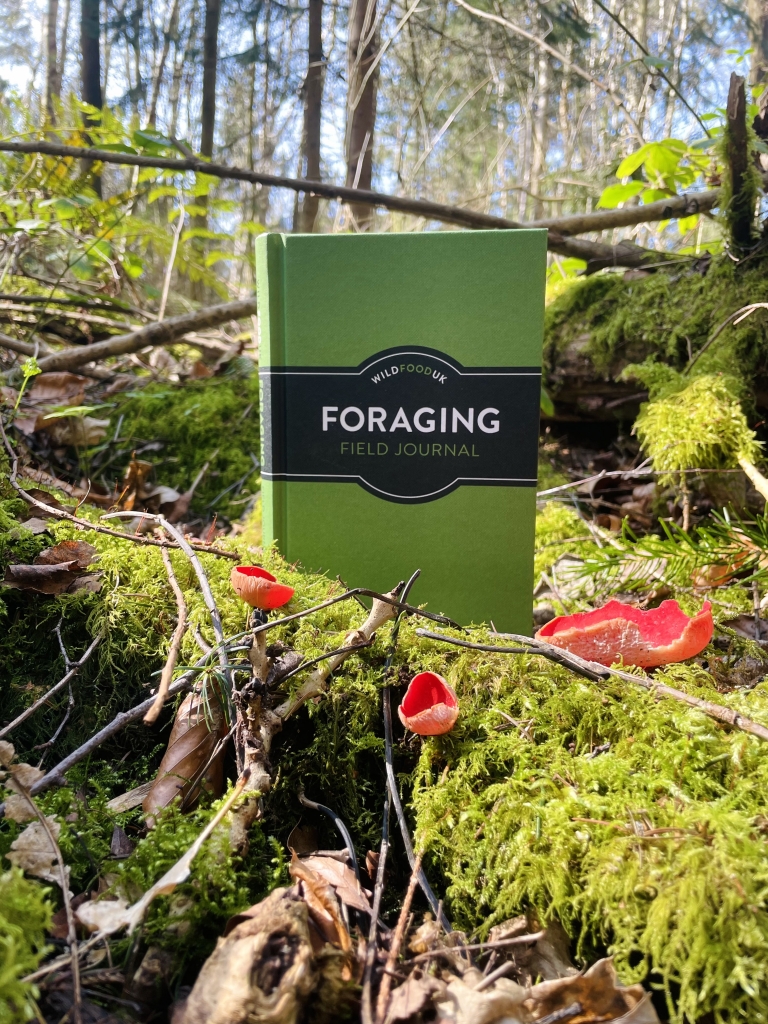
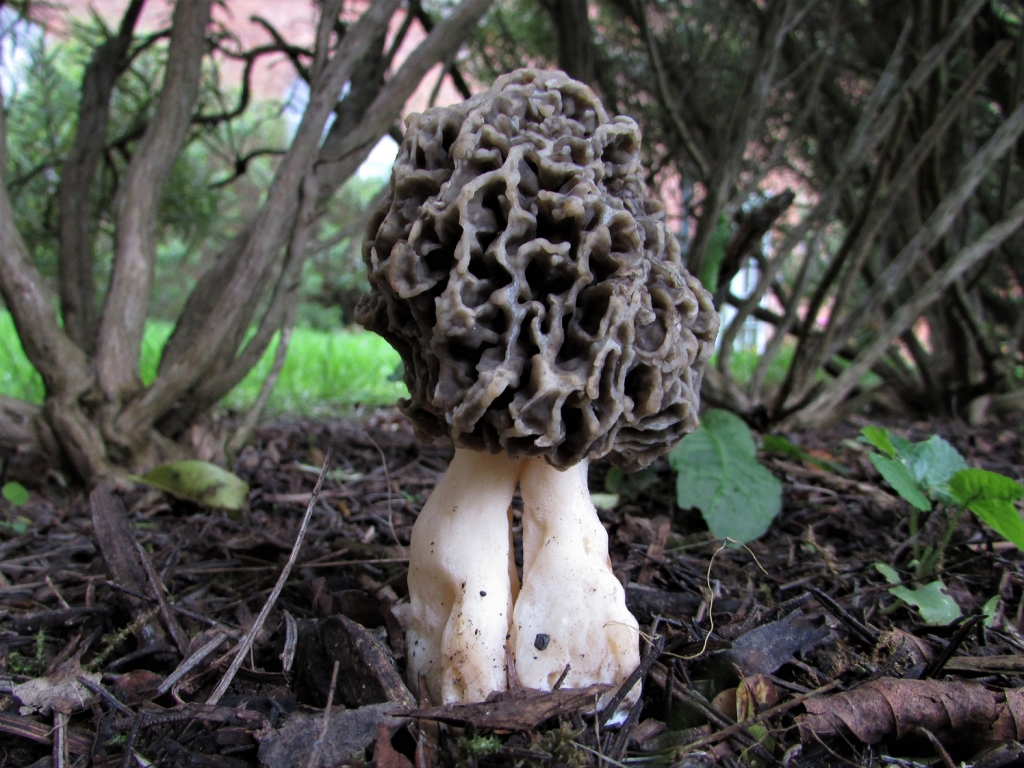
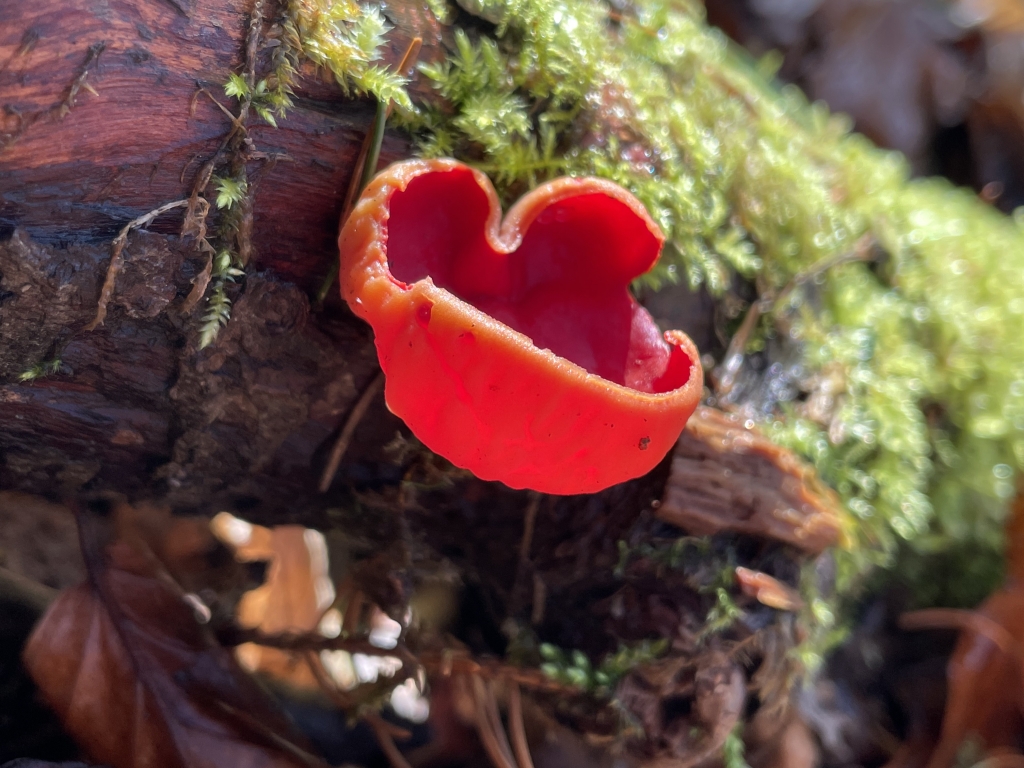
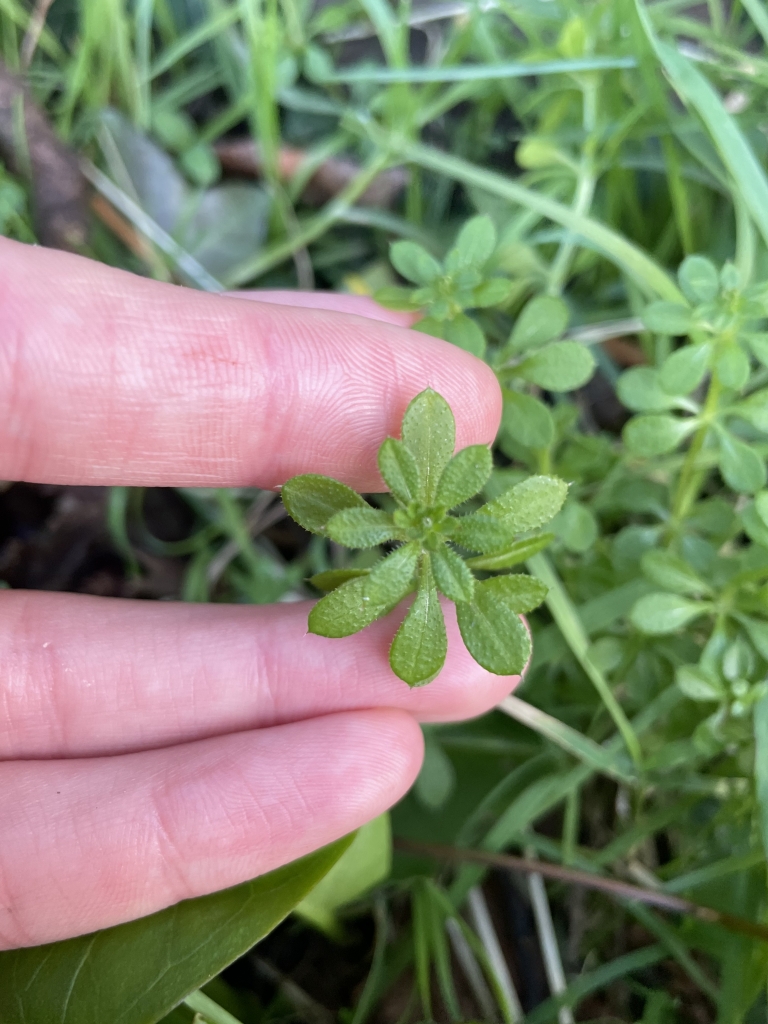
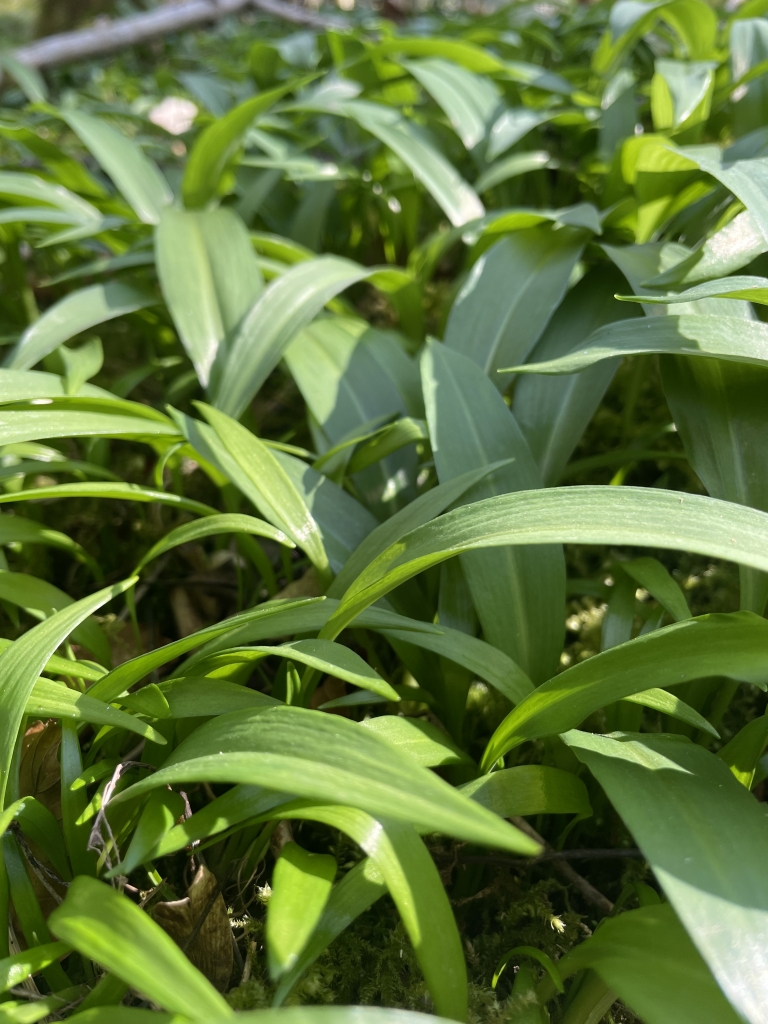

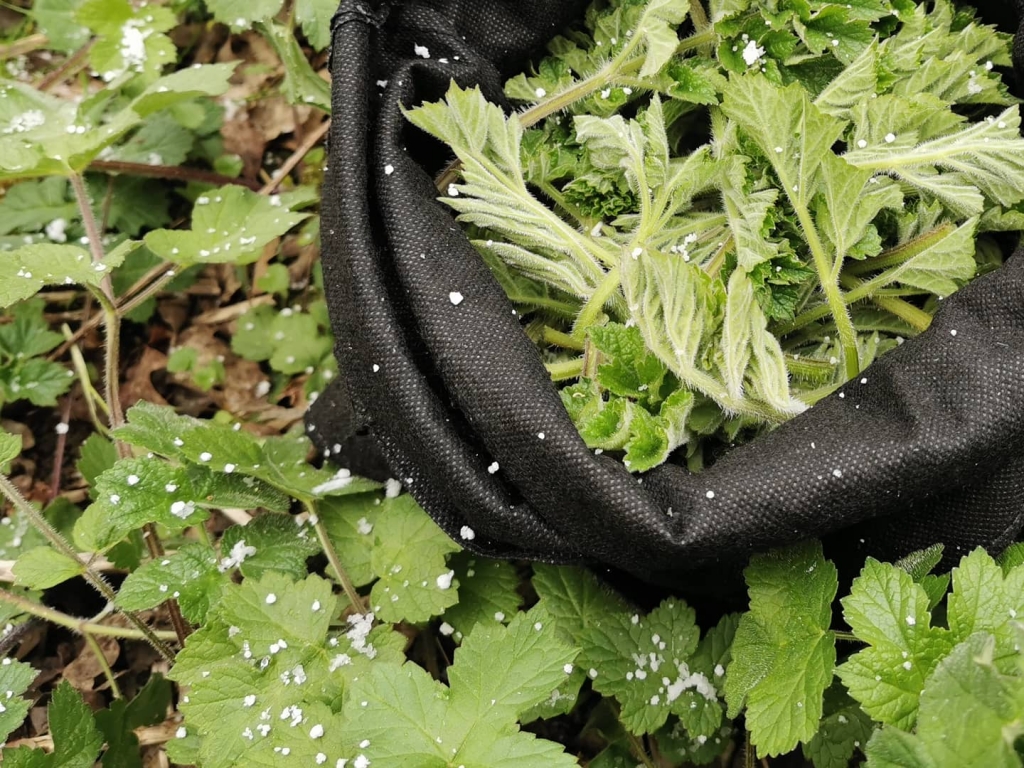
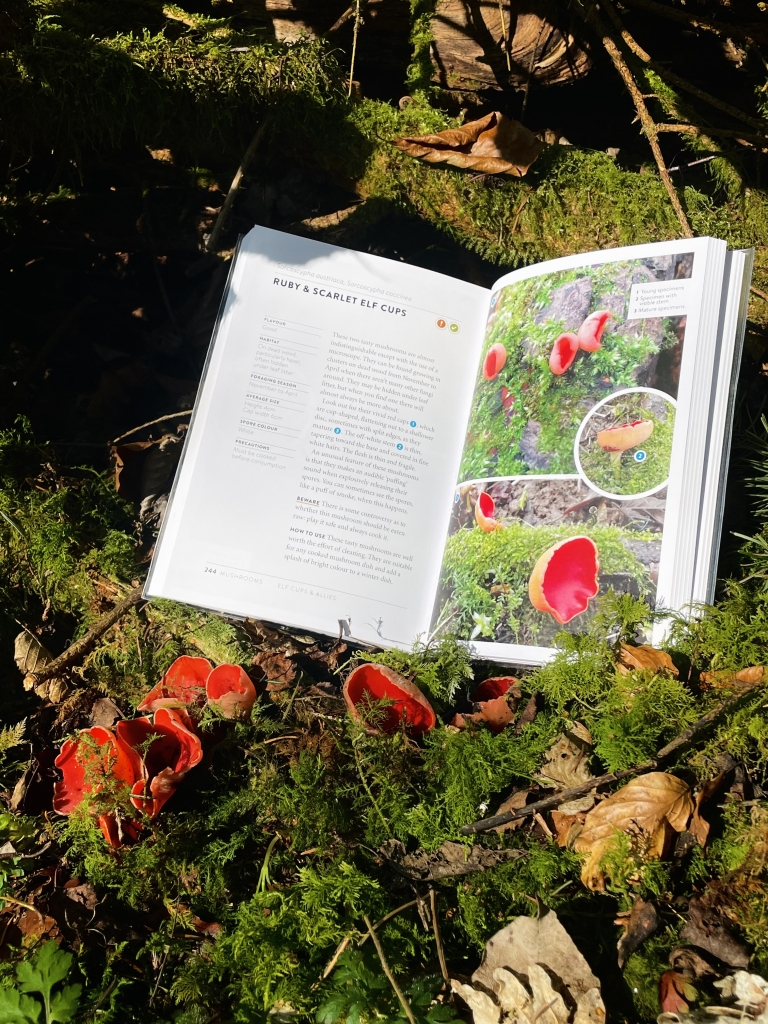
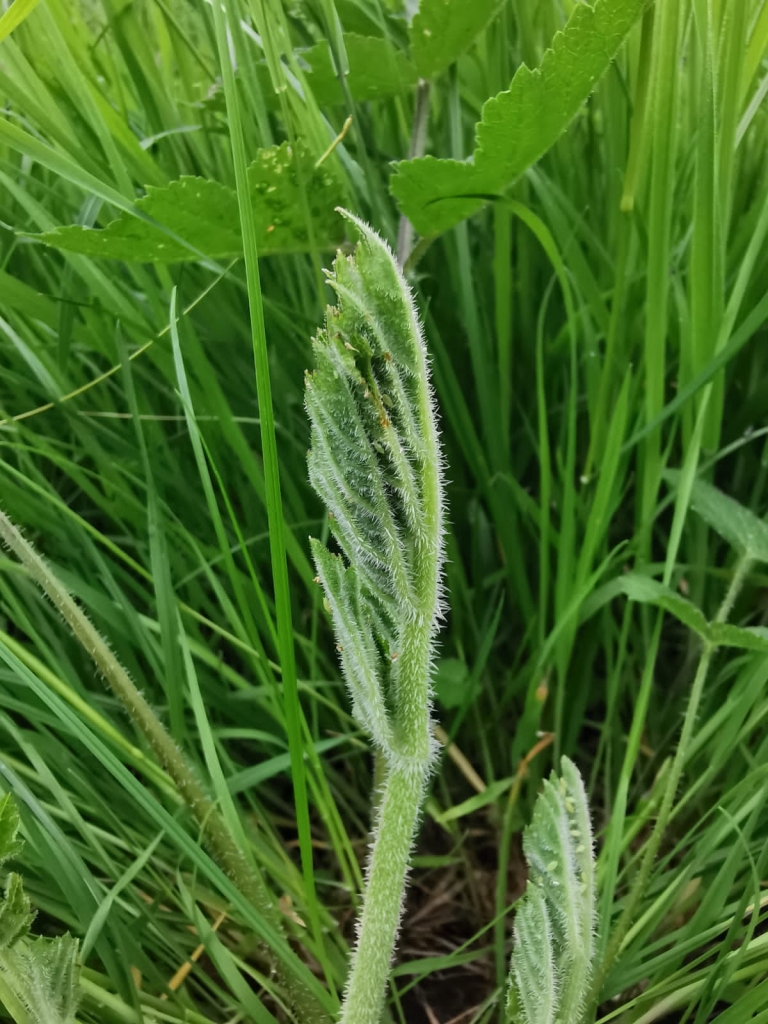

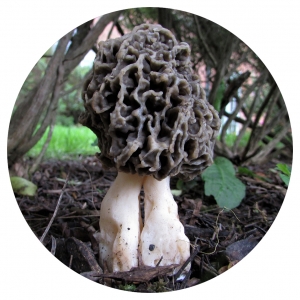
1 comment for Foraging in March 2022
Hi I just found your website while searching for edible perennials-Alexander’s.. love your site and posts- thank you. I’m currently converting a very boring grass and conifer garden into a foraging garden- wild and perennial. It’s 10×100 metres. I’m so excited about all the edibles that are popping up everywhere. Been enjoying hairy bittercress, perennial rocket, self seeded chard spinach, brassica flowers and chickweed and looking forward to lots of summer flowers to use in my salads. I’ve been researching edible forest gardens for a few years. I love your site- thank you. 💕